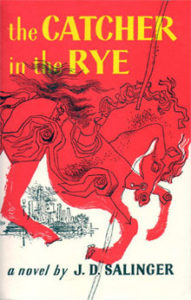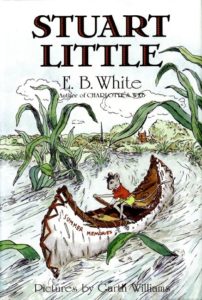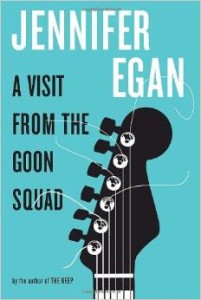
Tom Barbash’s The Dakota Winters is publishing this month. He shares five books about New York with Jane Ciabattari.

The Catcher in the Rye by J.D. Salinger
Holden’s disconnection felt like my own at his age, and I was the friend with whom he might wander through the park, or to a movie, or to a party to which we weren’t invited. New York at that age contained so many worlds just out of reach. I was a spectacularly bad student in middle school, and I can’t say why, other than like Holden I didn’t run with the current. I reread the book recently and loved it all over again, though I felt sometimes impatient with him, that he couldn’t see the possibility all around him.
Jane Ciabattari: Where were you when you read The Catcher in the Rye? Can you describe your room, how you read it (in gulps? In slow bursts?), how old you were, who you talked about it with? Did you write about it in school?
Tom Barbash: I was in eleventh grade, so past my struggling years, but I inhaled that book in around three nights of reading. I had a friend who loved it first, but I don’t remember talking about it much when I was reading it. It was my own experience. My room was in the front of our house and through one wall I could hear the elevator as it made its way to our floor, and through the other wall I could hear my sister playing her Neil Young records over and over: Harvest, and After the Gold Rush, and then Traffic’s John Barleycorn Must Die.

The Bonfire of the Vanities by Tom Wolfe
Bonfire of the Vanities feels much more of a time, but it captures—if perhaps a bit two-dimensionally—New York’s pomposity and self-importance, its class and racial conflicts. It felt for a while that the city had been taken over entirely by bond traders like Sherman McCoy stepping into town cars, and the fact that he’s hiding a huge, awful secret confirms all your suspicions.
JC: I’ll never forget that opening, when Sherman McCoy takes a wrong turn, headed for disaster:
“He had to look twice to make sure he was in fact still driving on a New York street. Block after block—how many? Six? Eight? A dozen?—entire blocks of the city without a building left standing. There were streets and curbing and sidewalks and light poles and nothing else.”
How would you compare the Manhattan of The Dakota Winters with the world Wolfe describes?
TB: It was decidedly less smug, and less dominated by the very wealthy, a little more anxious about its future. There were fewer Masters of the Universe, and more block parties.

Stuart Little by E.B. White
Stuart Little was one of my first favorites, and the boat pond where he sails his tiny schooner, the Wasp, was one of those places like the Adventure Playground and the nearby Alice in Wonderland statue that every city kid loved. His life like mine at his age was an apartment life with the park nearby, but with the added challenge of being a mouse with human aspirations. I never hid in a garbage can and got swept away in a sanitation truck, but I did fall asleep on a bus and ended up far away and lost.
JC: Which was your favorite character aside from Stuart?
TB: Maybe Margolo, the bird who carries Stuart from the garbage scow who demands that Stuart drop the ice skates he’s picked up that are weighing the two of them down, and earns a cupcake from a grateful Mrs. Little.

A Visit From the Goon Squad by Jennifer Egan
Any book that begins with a kleptomaniac on a first date earns a special place in my heart. Sasha, who keeps thinking back to conversations with her therapist and who steals her date’s wallet, is an irresistible character. Her walk-up apartment, with the bathtub in the kitchen and the old color TV, says everything about what it’s like to be young and alone in New York.
JC: A Visit from the Goon Squad won a National Book Critics Circle award in fiction and then the Pulitzer. One reason I admire it is the playfulness (a novel inspired by Proust and The Sopranos), the shape, the pushing at the edges of storytelling in the evolving Internet era (that PowerPoint section), the pop culture references, the humanity. But also her evocation of place. Do you have a favorite section describing a New York neighborhood or scene?
TB: There’s the walk around the East Village to the Pyramid Club, where “the streets are full of people, most of whom seem to be laughing…”, and then they buy egg creams from the Russian newsstand before drinking them in Tompkins Square Park and then popping pills and entering the Pyramid into a state of “tingling, stomachy happiness that feels the way you hoped adulthood would be as a kid: a blur of lost bearings, a release from the drone of meals and homework and church…”

Netherland by Joseph O’Neill
Netherland is such a beautiful book about what it is to be a foreigner in New York, and to make it your own. It’s also gorgeous tonally. There are long sections of street description that drop you into a dream state, and O’Neill’s vision of a post 9/11 New York is the best I’ve read.
JC: After Hans and his wife and child are dislocated by 9/11, they linger at the Chelsea Hotel, “staying on in a kind of paralysis even after we’d received permission from the authorities to return to our loft in Tribeca.” Paralysis is a good word for that state of mind that went on for months (I remember it well, although we were Upper West Siders and not evacuated after the attack), and he captures the sense of doom in passages like this:
“The pallor of the so-called hours of darkness was remarkable. Directly to the north of the hotel, a succession of cross streets glowed as if each held a dawn. The taillights, the coarse blaze of deserted office buildings, the lit storefronts, the orange fuzz of the street lanterns: all this garbage of light had been refined into a radiant atmosphere that rested in a low silver heap over Midtown and introduced to my mind the mad thought that the final twilight was upon New York.”
Plus cricket. Which of the three visions of Bald Eagle Field stays with you best?
TB: The one where Chuck first christens the field as Bald Eagle Field, explaining how he first killed everything with Round-up, then fluffed up the earth. Hans has to imagine it in its glory while it’s covered over in snow. “‘The first and best in the country,’ Chuck said. ‘Not for a second did I take him seriously. ‘Wow,’ I said.” Wow indeed.
*
· Previous entries in this series ·

